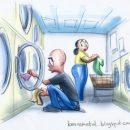Hello, I’m Dr. Gerard Gibbons with emotive storytelling.com with a few comments to share against the backdrop of this majestic scenery.
Storytelling was the hot topic at the most recent SXSW interactive conference in Austin, Texas.
About 112 events had the word “storytelling” in its title or stories as part of its topic. But one stood out as interesting to me. Author John Hagel, spoke about Moving from Story to Narrative. Hagel defines the difference this way: Stories are extremely powerful in terms of engaging emotion and creating memorable experiences. Yet they can be finite and closed ended.
In contrast he explains, narratives are open-ended. They don’t have resolution. There is something powerful that is contained within the process of them unfolding. Essentially they are an invitation to everyone to participate. In narratives, it’s up to you as to how it will unfold. So in that respect they encourage exploration.
Yet I believe it is a bit semantic. Whether you call it a story or narrative – they both essentially tap the source of emotive power at the core of the human spirit.
I have created, written and produced digital stories and narratives for 30 years. From that experience directly, I can share with you that both Stories and Narratives motivate actions. In some cases, they even motivate life and death choices.
Every powerful movement that has impacted our world has been shaped and energized by a powerful narrative and stories. Whether it was the stories that lead the chosen people out of Egypt, or President Kennedy’s inspiration that ignited and perpetuated our national mission to land a man on the moon, or the Martin Luther King “I have dream” speech on the steps of the Lincoln Memorial. Inspired minds lead to inspired actions and ultimately, to transformed individuals, communities and societies.
The bottom line is – Stories and Narratives drive mindsets more effectively than any other means. In that regard I particularly like Hagel’s comment when he says “If we get this right, the best way to think about the world, is not 7 billion mouths to feed, but 7 million minds to unleash.”
I agree strongly. Feeding minds and healing minds in relationship, education, healthcare, and behavioral health are best accomplished by approaches that move minds to action.
That’s why Storytelling and Narrative Communication matter. They are at the heart of emotive storytelling.










No comments yet.